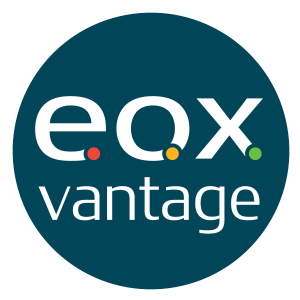Doing Brisk Business: You Need Speed to Succeed
Published in Rough Notes | September 2020 issue
Author: Mike Fieseler
If the marketplace were a racetrack, today's policy seekers want to drive a high-performance sports car instead of an old gear-grinding jalopy - which is what traditional operating models of insurance left them with, until recently. Insurance has made steady progress transforming its old-school, paper-based, in-person ethos, but in 2020 the COVID pandemic has super-accelerated the overall trend toward speed.
This year's overwhelming move to remote work - with its emphasis on screen time and virtual relationships versus physical interactions - reinforces the expectations for a brisk pace of business and customer service.

Providing effective online user experiences and efficient virtual interactions is becoming a necessary function for staying competitive. The millennial mindset of "I can find anything I need on the Internet" is pervasive. The Amazon effect means that consumers now want a fast, top-quality virtual experience with anything they want to buy. This expectation of instant gratification has bled into the insurance marketplace.
Reducing the time of the buying experience is crucial to gaining and retaining policyholders. They expect a crisp website experience with product information and potentially the inclusion of buying guidelines, plus the ability to quickly get a quote and/or interact with your team. Think Chatbot, request information options of an immediate download or contact, or an online calendar for appointment/meeting setting.
Such tools can be combined with self-service capabilities for documentation such as COIs - an added benefit is reduction of time that staff work on non-revenue-producing activities. All these approaches help address the fact that a two-week or even a two-day turnaround just doesn't cut it anymore. Potential buyers want it right now.
To resolve this situation, you must determine how best to gain broker loyalty and attract more submissions. Find ways to reduce cycle times such as submission to bind and claims resolution. Free up your people to focus on writing better business, creating new programs, servicing your clients and making a more satisfying experience.
It all comes down to achieving speed and simplicity. A good plan is to audit your current situation, determine where you are and where you need to be, then fill that gap.
Digitization and automation are IsurTech strategies that deliver potent answers. Both pave the way for efficiencies, faster processes, time/cost savings and the opportunity to better handle, manage and use data for optimal operations and better business analytics.
These are often synonymous with "digital transformation." That might sound intimidating, but it can be simply defined as the incorporation of digital technology into any element of a company's business practices, processes and procedures. Digital files replace physical paperwork; they make a better medium for sharing, storing, accessing, manipulating and collaborating. Meanwhile, automation can monitor data and then execute decisions and workflows based on that data.
Leveraging digital power drives a faster, smoother user experience. It also enables you to combine steps and automate decisions to reduce time. Does an underwriter really need to review a submission if it meets all your inclusion criteria? Instead, move those submissions along automatically and give the underwriting team time for more worthwhile and valuable efforts.

Many companies are automating their legacy submission-rate-quote-bind workflows to give brokers or policy holders an immediate quote for "slot rated" policies, which frees underwriters to spend time on larger, complex or outlier opportunities. Imagine the impact of taking a submission-to-bind process of three to five days down to 30 minutes!
Automation is a prime component of digital transformation. It involves changing the operation of inefficient, often human-driven processes and workflows to streamlined control by machines and/or software. Target tasks to automate are usually repetitive, consistent, manual and time-consuming. Back-office duties often make excellent candidates. Automating these kinds of actions frees up time to focus on more important, customer-facing, revenue-generating endeavors.
Automation need not be too complex or difficult to implement. A simple Excel macro or few lines of script developed by the IT department often can do the job.
My advice for you is to rev up and match the urgent speed at which business is changing in 2020. Step back - review your operations - and figure our the smartest way to accomplish the task. Then, search for an experienced technology partner who can employ their own rapid pace in driving innovations, updating systems and increasing the speed of interactions and processes. Always remember: Old processes plus new technology equals expensive old processes.
Give yourself a high-performance makeover to get around the business track faster. Happy driving!
The Author: Mike Fieseler's focus in on helping clients achieve operational efficiencies and cost savings. His career has spanned IBM, ARC, DataTrak and, for the past 10 years EOX Vantage. He combines the CPL designation through Target University with a 6 Sigma Green belt and a Cyber Security sales certification to craft solutions for the insurance industry.


